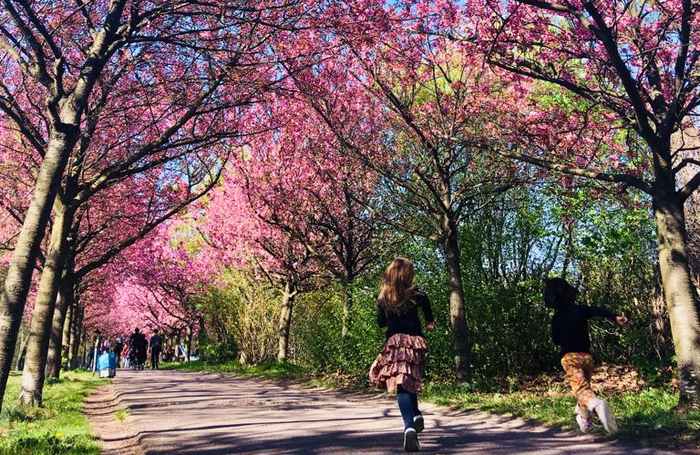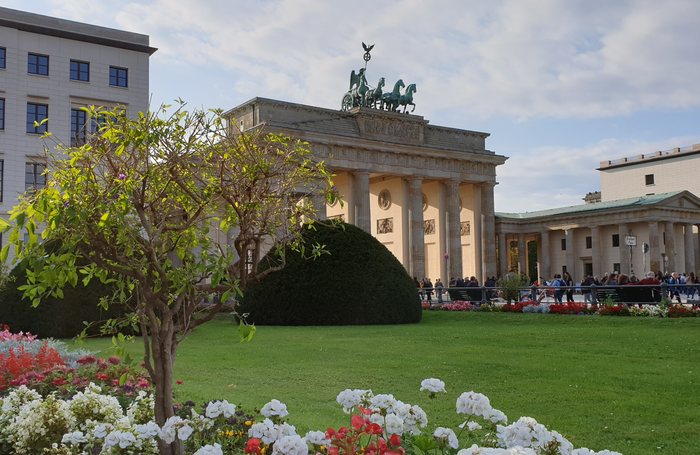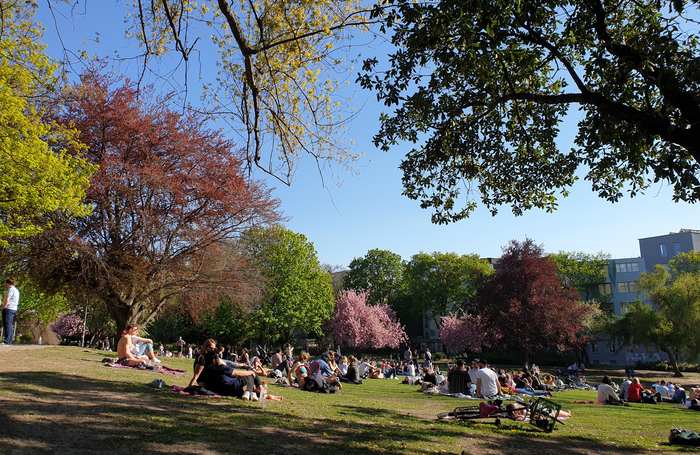Visiting Berlin at Easter? Definitely one of the best times to enjoy the German capital.
„Spring is a true resurrection, it‘s a part of immortality.“ – H.D. Thoreau
As Thoreau said, coming to Berlin in spring is equivalent to witnessing a true resurrection. The city awakens from its winter hibernation, its countless parks green up, and the animals are in high spirits as well as the humans. Berliners in particular are transformed, stopping to enjoy an ever-warming sun by leaving aside their proverbial winter “Schnauze,” and that obnoxious grunt is replaced by increasingly frequent smiles.
The upcoming Easter, on the other hand, gives days off to most people who, having left winter behind, are looking forward to treating themselves to a few days of relaxation. Berlin, besides its spring rebirth, remains one of Europe’s most interesting capitals. A city that combines the heavy past of the 20th century with the liveliness and modernity that has developed from the fall of the Berlin Wall to the present day. In the German capital, contemporary history becomes less abstract and can practically be seen and touched.
Many are taking advantage of the Easter vacations, especially from Good Friday to Easter Monday, to visit Berlin. At last, a number of tourist services inactive during the long winter can be resumed, the first beer gardens open, and bicycle rental services are preparing for the upcoming season.
We, Vive Berlin tour guides, are also multiplying our private tour offers, giving everyone a chance to be told about the many facets of the city through our Berlin Private Tours, available every day. All visitors will be able to be picked up at your location in Berlin to get to know the German capital at affordable prices by one of our professional english Tour guides. We have plenty of different guided tours that can be combined according to your specific interests at every day of the week!

BERLIN IN EARLY SPRING: ONE OF EUROPE’S BEST DESTINATIONS
The flow of people visiting is compensated by the flow of people leaving the city instead. Suffice it to say that out of a population of 3,600,000, only one million are true Berliners. Most of the rest are Germans who come from other regions, and as many as 600,000 are foreigners who take advantage of the free days offered by the Easter vacations to return home or take a little trip.
Of course, Easter does not always fall on precise days of the year, so you also have to be a little lucky with the weather, but I assure you that the excitement for spring is really palpable. If then, as it has often been the case for the past few years, the temperatures are slightly above average… well, you can really witness some crazy things for this region. People in flip-flops and shorts, long lines for ice cream, or maybe even a few brave people already getting wet in the city lakes nearby.
One thing is certain, here in Germany there are still half seasons. Nature also seems as punctual as the Germans, and the gradual transitions from winter to spring or summer to fall are indeed the most beautiful periods. Watching the buds on the trees, waiting to put their leaves back on, contributes to that sense of anticipation for the arrival of the new warm season, long periods of light, and natural awakening.
The mood of Berliners improves with the temperatures and it is at this time that people begin to walk around showing the hint of an unconscious smile that will become wider and wider. As the great German poet Goethe said, “Everyone likes to stop in the sun today. Today they celebrate the resurrection of the Lord, for they themselves have risen.”

TRAVELING TO BERLIN DURING EASTER WEEK: RECOMMENDATIONS
If you are coming to spend Easter in Berlin, it is important to know that the temperatures will certainly be better than in winter, but that it is generally very windy. The absence of relief in the region around the capital exposes the city to windy days that lower the perceived temperature.
But there is no need to be discouraged, as the Germans say, “There is no such thing as bad weather, only bad clothing.” Just bring warm clothes and adopt the mountain strategy of dressing in onions or layers.
Equipped like that you can, like the Germans, take long Osterspaziergaenge, the typical Easter walks in the Tiergarten park or Gruenewald forest. It can also be a good idea to go outside the borders of Berlin, for example, we will be happy to guide you to discover the Prussian Versailles with our favourite Private Tour to the city of Potsdam. The beautiful royal park changes its face with spring and the city offers its best with its palaces and idyllic views.
Don’t worry if you see bonfires in some of Berlin’s parks on Easter Saturday night. These represent the tradition of Easter fires or Osterfeuer. It is a custom that has its roots in the pagan world of the Germanic tribes, which makes everything a little more mystical.

EATING IN BERLIN IN SPRINGTIME
Even in the German capital, major holidays are defined by special culinary dishes peculiar to typical Berlin cuisine. During the Easter season, restaurants offer many dishes based on white asparagus, one of the typical regional products that excite Berliners.
Another popular habit in Berlin is brunch. Combine breakfast with lunch and enjoy time with friends and family. For Easter, there is a special brunch category, Osterbrunches!
Finally, a dish that became popular after the war and is usually eaten at this time is the “fake rabbit“: a roast of ground meat with an egg in the center. Eggs and Rabbits bring us to the second highlight of this period…

WHAT HAPPENED TO EASTER EGGS?
I have often had visitors in Berlin ask me where to buy our traditional easter eggs for their children here in the city.
Sorry, but their absence is part of those cultural discoveries that make the trip so interesting. No giant eggs here, only chocolate bunnies. But why Easter bunnies? The story is rooted in the past which was certainly colder than today, with very long winters that wore everyone out a bit, and just when you were on the edge, here suddenly was spring: flowers appear in the meadows and with them rabbits hopping among thousands of colors. Finally the darkness and cold are behind us and winter is over!
Ever since the 17th century, it has been customary in Germany to paint hard-boiled eggs in bright colors or intricate patterns and then hide them in gardens or meadows so that children can later find them with a festive treasure hunt. For centuries eggs have been a symbol of life and fertility. And it is in this way that the various symbols of life come together in this custom.
Egg colors remind us of flowers, rabbits are a sign of the end of winter, and the egg is a symbol of fertility.
In the 19th century, the chocolate industry used these customs for commercial purposes – in Italy with giant eggs and in Germany with Easter rabbits. However, walking around Berlin you may come across many small colored eggs, real or plastic, hanging from bushes or tree branches. The country you go, the culture you find.
BERLIN IN EASTER AND SPRING WITH US AT VIVEBERLIN TOURS
If you come to Berlin in spring or Easter you can enjoy a city celebrating the end of winter through everything you have read in this article. But more importantly, you will be able to take a guided tour with us at last warmed up by the beautiful spring sunshine.
You can do this by hiring us for a PRIVATE TOUR so you can have an exclusive guide all to yourself, your family, or your group of friends. Turning to ViveBerlin Tours is definitely the best way to discover the city with our Guided Tours of Berlin in English!
We will be able to tell you more about this fantastic time of year and our city on the tour. We look forward to welcome you in our hometown Berlin!

